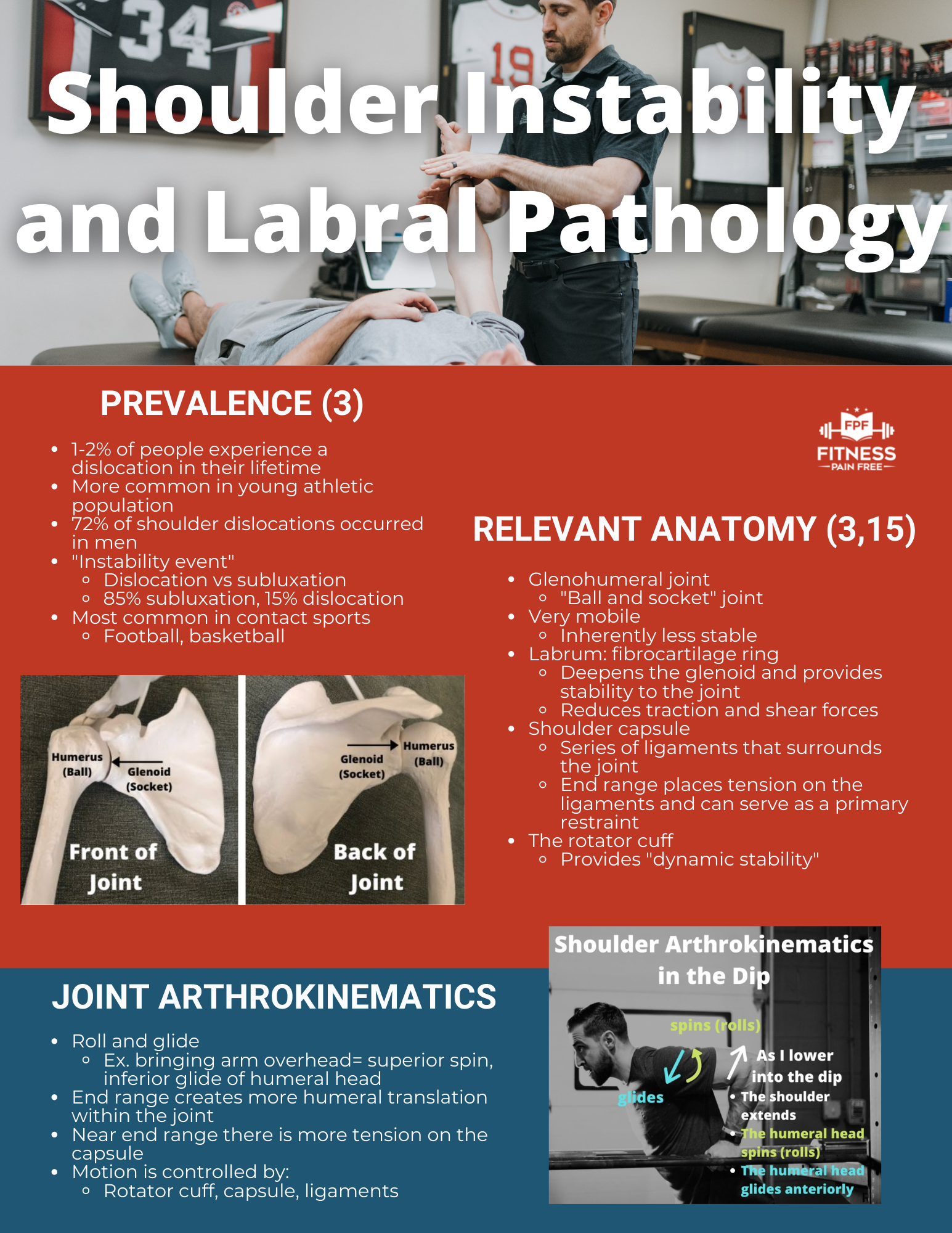
Multidirectional Shoulder Instability (MDI) Clinical Examination [Physical Therapist Guide]
To go along with today's episode I have a nice infographic to share...
Sign up to receive FREE: Shoulder Instability and Labral Pathology - The Evidence Based Cheat Sheet
Click HERE to Download FREE
Grab the rest of the Mini Course and Sign up for the Certification Pre-sale list:
- FPF Mini Course - 7 Reasons Why Injuries Happen in the Gym and What to do About it
- The Fitness Pain Free Certification
In today's video we go over Multidirectional Shoulder Instability (MDI) Clinical Examination [Physical Therapist Guide]:
Struggling to diagnose multidirectional instability (MDI) in the shoulder? This video dives deep into the latest criteria & the most effective tests to confidently identify MDI in your patients. Here's what you'll learn:
- How MDI differs from simple laxity & why instability matters
- When MDI typically occurs & the potential causes
- Identifying the "tell-tale" signs of MDI, including scapular movement patterns
- Performing key diagnostic tests: sulcus sign, drawer tests (20 & 100 degrees), & anterior/posterior apprehension tests
- A breakdown of the recent Watson (2022) criteria for MDI diagnosis
Timeline:
- Laxity vs. Instability: (0:10)
- Congenital vs. Acquired: (0:42)
- Most Common Age Group: (1:12)
- Predominant Instability: (1:23)
- Altered Scapular Motion: (1:56)
- Diagnostic Criteria: (4:22)
- Inferior Sulcus Sign: (5:19)
- Anterior and Posterior Drawer in 20 degrees Abduction: (5:57)
- Anterior and Posterior Drawer in 100 degrees Abduction: (6:23)
- Anterior and Posterior Apprehension Tests: (6:43)
- Diagnostic Criteria Summary: (7:06)
Unstable everywhere!!!
- Dan Pope DPT,OCS,CSCS
Show Notes / Relevant Articles:
- FPF Mini Course - 7 Reasons Why Injuries Happen in the Gym and What to do About it
- Anterior Shoulder Instability Clinical Examination [Physical Therapist Guide to Diagnosis]
- What Physical Therapists Need to Know About SLAP Tears
- What Physical Therapists Need to Know about Shoulder Instability
- 6 Keys to Shoulder Instability Physical Therapy
- Shoulder Instability Physical Therapy Exercises | Labral Tear, SLAP, Bankart | Open Chain
Want to support me and decide topics for future episodes? Click HERE to sign up for FPF "Insiders" for just a dollar. You'll gain access to 100+ webinars, e-books and complete guides. Plus, you'll get private access to the "Insiders" Facebook group where you can have all of your questions answered by me.
Looking for other ways to support me that are 100% free?
- Like, comment and share on youtube, facebook and instagram
- Leave a 5-star review on apple podcasts
Thank you!
Dan Pope DPT, OCS, CSCS
References:
- Watson L, Pizzari T, Balster S, Lenssen R, Warby SA. Advances in the Non-Operative Management of Multidirectional Instability of the Glenohumeral Joint. J Clin Med. 2022 Aug 31;11(17):5140. doi: 10.3390/jcm11175140. PMID: 36079068; PMCID: PMC9456769.

